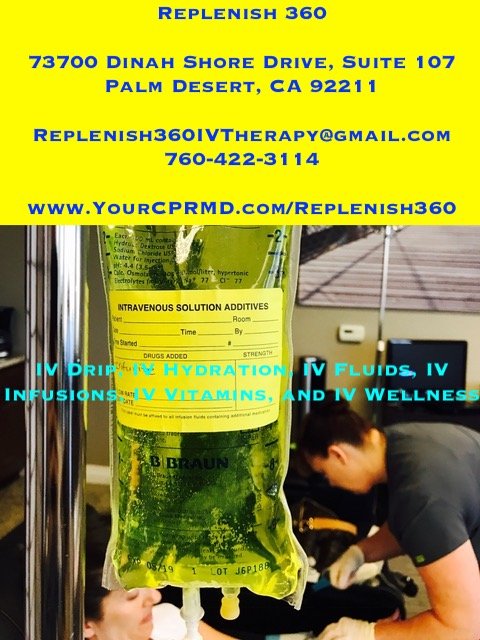Understanding the Pros and Cons of IV Hydration and Vitamin Therapy
Intravenous (IV) hydration and vitamin therapy have become increasingly popular as a means of improving hydration, boosting energy, and treating various health conditions. The process involves the administration of fluids, electrolytes, and vitamins directly into the bloodstream via an IV drip. Although these treatments may offer numerous benefits, there are also potential risks that must be carefully considered.
REPLENISH 360, A DIVISION OF PDRE LLC
Phone: (760) 422-3114
Email: replenish360ivtherapy@gmail.com
Address: 73700 Dinah Shore Dr. Suite 107, Palm Desert, CA 92211
By Appointment Only
One of the primary applications of IV hydration is the treatment of dehydration, which may result from illness, excessive sweating, or insufficient fluid intake. IV fluids quickly replenish lost fluids and electrolytes, restoring hydration levels and promoting overall well-being. Furthermore, IV hydration may be used to enhance athletic performance, alleviate jet lag symptoms, and improve energy levels.
IV vitamin therapy, also known as a Myers cocktail, involves the infusion of high doses of vitamins and minerals into the bloodstream. Some proponents of this therapy claim that it can strengthen the immune system, enhance skin health, and prevent the onset of chronic illnesses like cancer and heart disease. However, scientific evidence supporting these claims is limited, and some experts caution that excessive doses of vitamins and minerals may be harmful.

While IV hydration and vitamin therapy can provide various benefits, they also entail certain risks. The most common risks associated with these therapies include vein damage, inflammation, and infection. Additionally, patients may experience allergic reactions to the substances used in IV therapy, particularly if they have pre-existing allergies or sensitivities.
To ensure safe and effective IV therapy, patients should always seek the guidance of a qualified healthcare professional. A medical practitioner can evaluate whether IV therapy is appropriate for their specific health concerns and provide a comprehensive assessment of the potential benefits and risks. Additionally, it is crucial to choose a reputable provider who adheres to appropriate safety protocols to minimize the risk of complications.

In conclusion, IV hydration and vitamin therapy have become increasingly popular as a means of addressing various health conditions. However, it is vital to understand the possible risks involved and to consult with a healthcare professional before undergoing these treatments. By working closely with a qualified provider and taking appropriate precautions, patients can safely enjoy the potential benefits of IV therapy.






Add your Scripsio!
Comments